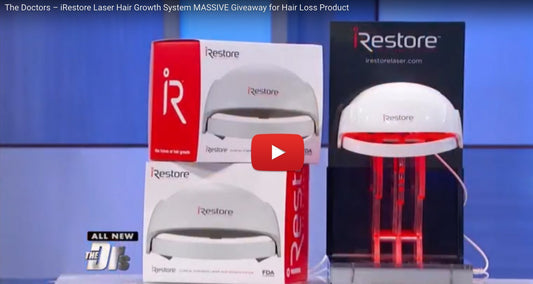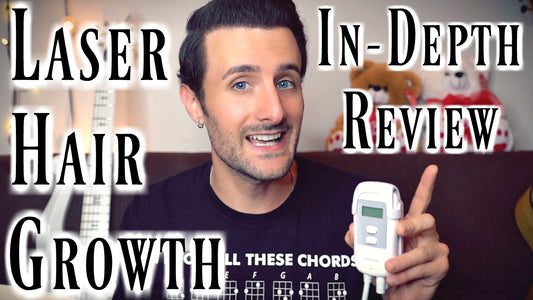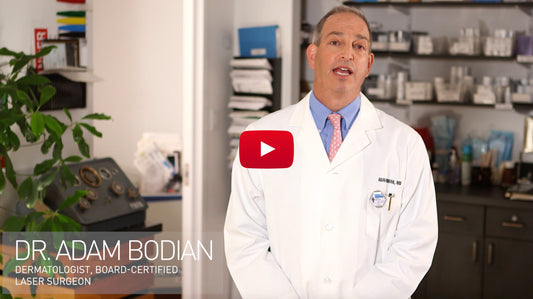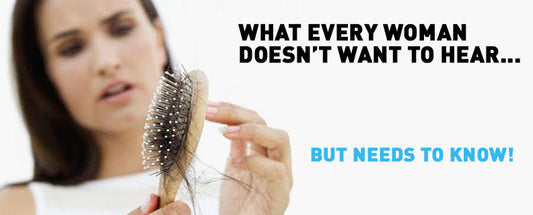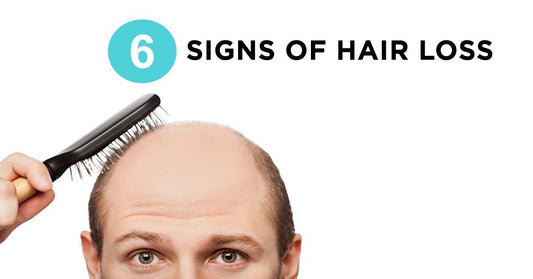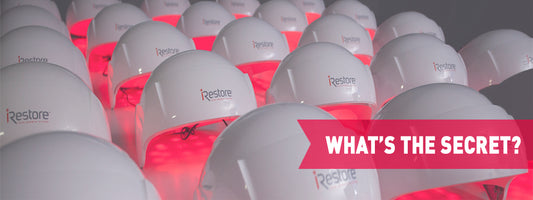The iRESTORE Blog
Confidence Starts Here


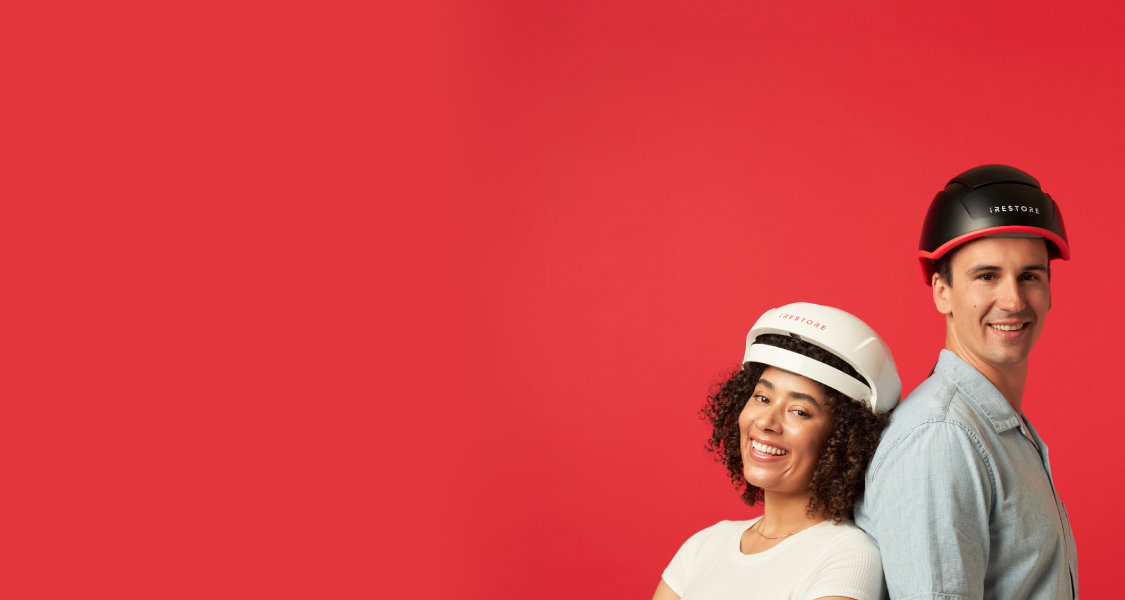

56 Results
Eat Your Way To Fuller, Thicker Hair [Huffpost Feature]
Our CEO and Founder, Craig Nabat, understands that it can be a challenge to prioritize preventive hair care, yet there’s something important that we can all do to prevent or slow down hair loss. Find out how Craig uses the REVIVE Max Growth Kit and makes nutrition a priority for his hair health in this Huffington Post Article.
Read MoreMcDonald’s Fries: The Cure For Hair Loss?
Recently, researchers from Yokohama National University in Japan have developed a method that may lead to a new treatment for hair loss and potentially help cure baldness. A particular chemical used in the study called dimethylpolysiloxane has been linked to an unexpected source —McDonald’s french fries. But some people may ask, “How many fries do I have to eat to grow my hair?”
Read MoreiRESTORE Gives Away 150 Laser Hair Growth Devices On The Doctor
If you ever channel surfed in the afternoon, chances are you’ve stumbled upon The Doctors TV Show. We wanted to spread some love and gift 150 Laser Hair Growth Devices (valued at $695) to the entire audience on the show! Here is your chance to claim yours...
Read MoreiRESTORE VS Hairmax VS Capillus VS iGrow – Best Laser Hair Growth Device Review
How do you know which laser device is right for you? David DiMuzio, a successful singer, YouTube creator, and a hair loss sufferer, provides an in-depth review on a variety of laser hair growth devices. Check out what he has to say about what worked best for him.
Read MoreiRESTORE: Clinically Proven to Grow Hair
Dr. Adam Bodian, a board-certified laser surgeon and member of the American Academy of Dermatology, conducted the 16-week clinical study for the iRESTORE Laser Hair Growth System. Find out how the iRESTORE performed in the study.
Read MoreIf You’re A Woman Over 40, You Need To Know This About Your Hair
Is your hair acting out? Suddenly feeling drier or more brittle than you remember? Thinner or less manageable? Have you looked at yourself in the mirror and wondered, “What is going on?” You’re not alone. Many women over 40 are experiencing similar changes—in a BIG way. Changes come in waves, some slow and subtle and others make you feel like you’re a different person overnight. Let’s start at the top with the mane attraction––your hair. What was once thick and lustrous may have started to become dull and grey. And even if you always had thinner hair, it’s hard to ignore there’s even less there to gripe about. So what’s going on? And more importantly, what can you do about it? Here are a few tips that will take the stress out of dealing with your mature tresses: 1. Dull, Dry & Brittle Hair Most women experience a change in the texture and appearance of their hair as they age. We’re not just talking about the pesky grays (more on that later), but the unmistakable coarse and brittle nature that serves as an unrelenting reminder that mother nature is turning the hands of time. What’s going on: One word – hormones. Yes, they’re back again. Actually, it’s what’s missing that’s at play here. Estrogen levels steadily decline as women reach their forties and head towards menopause (oh no!). As a result, testosterone levels––the same sex hormone in men––start to dominate. Now, testosterone isn’t all bad (it actually can help women live longer), but it does come with a price and that often means drying, dulling, thinning hair. What you can do about it: First and foremost, put the styling products down. That’s right, while your instinct is to style your way out of lackluster hair, you are in fact adding to the problem. Sorry, but your styling products are most likely further drying or damaging your hair. Don’t worry! You actually have an ACE up your sleeve that can help... Okay, not literally, but take a peek into your medicine cabinet or refrigerator, we’re talking about Vitamins A, C, and E all of which help promote cell and tissue growth. Add to that a healthy diet of foods rich in calcium, antioxidants and Omega-3 fatty acids and you have a recipe for success. You can, in fact, eat your way to more luscious locks, which will reduce your risk of overstyling and further damaging your hair. And don’t forget the obvious counter punch to dry, brittle hair—stay hydrated! 2. Gray Hair Probably the most common issue all women (and men) over 40 face is the appearance of gray hairs. It’s become the universal symbol for aging even though it’s not always the case (you can actually start seeing gray hairs as early as your late teens). To be fair, premature graying is most often rooted in genetics. Individuals that witness gray hairs popping up in their late teens or early twenties are likely lacking the melanin production needed to give hair its color. What’s going on: The first thing to note is that your hair isn’t turning gray…it’s GROWING in gray. As mentioned earlier, the color of your hair is rooted in the production of melanin, which gives your hair (and your skin) its color. As you age, your melanin production slows down and eventually as your hair grows and finally sheds, the new hair grows in gray. It’s not surprising then, that individuals with red or lighter hair tend to show grays sooner than their darker hair counterparts. Aside from mother nature, there are other potential culprits that pepper some salt in our hair—a lack of Vitamin B12, B7 (more commonly known as biotin) and Vitamin D. Low levels of B12 affect the production of melanin, and as we age our body has a harder time absorbing B12. In more serious cases, low levels of B12 is attributed to pernicious anemia and one of the symptoms of that includes gray hair. Low Vitamin D levels lead to a host of problems from auto-immune issues, to low bone density to grey hair. However, there is a silver lining when it comes to Vitamin D. Increasing your vitamin D intake can actually help restore the growth of your pigmented hair and seemingly ‘reverse’ grays. What you can do about it: Let’s start at the root of the matter. You can’t run away from gray hair, none of us can. But you can slow it down and in some cases reduce the appearance of grays by growing healthier, pigmented hair (some researchers have actually suggested that low-level laser therapy can restore your hair and reduce graying). The most common response is to dye your hair. This is certainly effective but requires regular maintenance to keep up appearances. Our advice is to be very conscious of the types of products your hairstylist uses because harsh chemicals and too much hydrogen peroxide actually contributes to bleaching out your hair more in the long run, not to mention the drying and thinning effects. If you haven’t had your Vitamin B12 and D levels checked recently, it would be worth paying your doctor a visit and having them order some blood work. If it turns out that you’re lacking in those areas you can easily boost your levels with supplements, diet, and even just some good ol’ sun. That’s right, if Vitamin D turns out to be the culprit, letting your hair/scalp get some sun helps to stimulate melanin production. At the end of the day, don’t forget: “Gray hair is a blessing, just ask any bald man!” 3. Thinning Hair One of the more alarming changes women experience is female pattern baldness or thinning hair. All women can expect to experience some level of hair loss. According to Prevention: 50% of women will experience some form of hair loss by age 50. For some, the hair loss is minor and for others it can be pretty drastic, even revealing parts of the scalp through the hair. What’s going on: Hair growth rate naturally slows down with age, that’s to be expected. More significant hair loss is attributed to changes in hormone levels, especially as women approach and reach menopause. An underactive thyroid is often another major cause. In essence, it’s not so much that you’re losing hair, you’re just not growing more hair than you’re shedding. What you can do about it: If you’re not certain what’s causing your thinning hair, consult your doctor, ideally, an endocrinologist since hormones and thyroid function are their specialties. Identifying the cause could help you press pause and slow down the fall out rate. If there’s no significant underlying cause for your hair loss, you might find relief in FDA-cleared solutions designed to restore thicker and fuller hair growth – like the iRESTORE Laser Hair Growth System. CONCLUSION At the end of the day, no matter what issues you face with your hair, there are steps you can take steps to minimize its impact on your life and appearance. For some, the challenge is greater than others. No matter what the end result is, the most important thing to remember is – don’t stress over it too much. Gray and thinning hair is a part of aging and a natural part of life. We’re all for taking advantage of the (safe) solutions out there to reverse the effects and improve your appearance, but sometimes it’s more important to simply embrace it and enjoy your life. After all, stress never made anyone look or feel younger! P.S. If you’d like to start taking care of your hair more and don’t know where to start, check out our drug-free and non-invasive solutions, which includes some of our favorites: the Thickening Shampoo and the DHT Blocker Formula.
Read More6 Early Signs You’re Going Bald & 6 Ways to Fight It
Here are the cold hard facts… Most of us are going to experience some form of balding or thinning hair through our lifetimes. Let’s face it. Nobody wants to lose their hair. For many men, confidence is our #1 asset and the fear of balding and having our scalp be visible doesn’t exactly help us to sleep well at night. As we find more and more strands left for dead on our pillow, it can feel pretty defeating. Now, before you lose hope and throw your comb and gel out the window, there are a couple of important things you should know. First, although androgenetic alopecia or common male pattern baldness (MPB) accounts for more than 95% of hair loss in men. In some cases hair loss is caused by other factors such as stress, side effects from medicine or a medical condition. Second, if you are predisposed to male pattern baldness, you are not doomed – there is hope! There is 80 million hair loss sufferers in the United States, and men account for about 60% of that number. Here are more interesting statistics from American Hair Loss Association: By age 35, two-thirds of American men will experience some degree of hair loss. By age 50, that number grows to approximately 85%. Which tell us all one thing – hair loss IS progressive, which means it will likely worsen with age. Approximately 25% of men who suffer from male pattern baldness do so before they even reach the age of twenty-one! The best treatment is preventative treatment. Almost all medical professionals would agree with that statement. If your dad and uncle are bald or balding, the chances are high that you’ve also inherited those genes. If that’s you and you’ve started to notice early signs of hair loss, the time to start taking care of your hair is NOW! So what are the early signs of balding and how can we be proactive in slowing it down or preventing it? Check for these 6 signs to see if you are at risk for MPB: 1. Receding hairline – This is probably the biggest indicator that you are in the early stages of MPB. A receding hairline begins on top at the frontal line and works its way back. 2. Genetics – If your family tree is branching several bald relatives, the apple probably won’t fall too far. The most common reason for hair loss is genetics. Patterns of baldness in your family may be a good indicator of what your future holds for you. 3. Increased pillow and shower hair – It is normal to lose between 50 to 125 hairs per day. Although we don’t recommend stressing yourself out by trying to count every hair you lose, an increase in hair left on your pillow or falling out when you shampoo is often an early indicator of MPB. 4. Thinning in the crown area – Eventually leading to a “bald spot” as it’s commonly called, this is a typical sign of MPB. This is a more obvious sign since it thins in a rounded area while surrounded by normal hair growth. 5. Itchy or flaky scalp – While this is not a cause of MPB, it often happens in conjunction with hair loss. Sebum, or skin oil, is produced under the surface of the skin, including on the scalp. While this is normal and helps in keeping the hair moisturized and healthy, an overproduction or build-up of sebum can lead to hair loss by clogging the hair follicles. A flaky or itchy scalp can be a result of this. 6. You’ve ruled out other causes – Patchy hair loss would be more indicative of a different underlying cause. In this case, you should seek medical advice to rule out any conditions that could be causing your hair loss. If your health checks out great and you’re not on any meds that may cause hair loss, you could be at risk for MPB. WHAT OPTIONS ARE OUT THERE? Now that you know what to look for, here are some tips on how to combat balding or thinning hair: 1. Manage your stress – While you can’t always control the amount of stress you have or the reasons you have it, you can work to manage it. One common cause of baldness is the level of testosterone in the body, which can be affected by your stress levels. Try to keep balance in your life, set healthy boundaries with work, get regular exercise, and try meditation, yoga or any other activities that bring you calm and comfort. 2. Eat healthy – Foods rich in antioxidants and nutrients are helpful in reducing toxins and free radicals that contribute to oxidative stress in our bodies. Blueberries, green leafy foods, organic foods without pesticides and green tea are some of the many choices that will combat oxidative stress. Also make sure your diet is rich in protein and iron, which promote healthy hair growth. 3. Try laser hair growth therapy (you guess it!) – Our FDA-cleared medical device that uses clinical-strength laser technology to treat thinning hair and regrow fuller hair for men and women who suffer from androgenic alopecia (genetic hair loss). It uses non-invasive, pain-free red light therapy to stimulate growth of thicker and healthier hair. (Psst…It’s also doctor-recommended and clinically proven in studies.) 4. Take DHT blockers – It’s been widely accepted that DHT is the main culprit that is responsible for genetic hair loss. DHT is a byproduct of testosterone and is believed to lead to miniaturization (or thinning) of hair follicles – leading to accelerated hair loss. One easy way to combat this is to take supplements that contain DHT blockers in order to slow down or reverse hair loss. 5. Don’t hide under a baseball cap – Although it’s a quick and easy disguise, wearing tight hats can rub and smother the hair follicles. This can accelerate hair loss. You’re better off in the long run to let your delicate follicles breathe. 6. Use natural hair growth products – There are a myriad of products out there to fight thinning hair. We recommend choosing drug-free and non-invasive methods because we believe your health is more important than your appearance. Have you heard of the award-winning ingredient Redensyl®? If not, it’s worth your time to research and learn more about. It’s the active ingredient that is used to formulate some of the most effective hair growth products out there (we use Redensyl® in formulating our Anti-Hair Loss Serum and Anti-Thinning Shampoo). WHAT NOW? No matter if you are just starting to notice symptoms or you have had advanced hair loss for a long period of time, just know that there are solutions that can help you overcome your problems. One important thing to keep in mind is that you may respond to certain treatments differently from another person. That’s completely natural because we all have different genetics and biological response to a stimulus. Our recommendation is to try any and all (safe) solutions out there to find one that works best for you. Whatever you decide, make sure to act NOW. After all, you’re racing against the clock when it comes to hair loss. With the risk-free options available on the market that offer money-back guarantees, there can only be upsides from trying them out for yourself today.
Read MoreLow-Level Laser Therapy: The Secrets to Growing Your Hair Back Fast
Notice your hair falling out daily? …it may not be as bad as you think. The average person loses 50 to 100 hairs per day. That is considered “normal” and not a cause for concern. It happens when you’re taking a shower, blow-drying your hair, or even just sleeping. And while most people don’t see these few loose strands as a cause for alarm, for many others it’s a cause for concern. Whether your hair is in the early stages of receding or already showing signs of more significant thinning, there are quite a few options available on the market to stop the progression of hair loss so you can free yourself from the stress and frustration. But first, let’s get into the “why.” Why Is My Hair Falling Out? According to the American Academy of Dermatology (AAD), hair loss and thinning affect 50 million men and 30 million women in the U.S. Many conditions and diseases can result in hair loss, the AAD reports, as can improper hair care. While the exact cause of hair loss may not be fully understood, the most common type of hair loss is due to genetics – called male pattern baldness or female pattern baldness. It usually occurs gradually and in predictable patterns — a receding hairline and bald spots in men and thinning hair in women. Heredity also affects the age at which you begin to lose hair, the rate of hair loss, and the extent of baldness, the Mayo Clinic points out. Pattern baldness is most common in men and can begin as early as puberty. This type of hair loss may involve both hair thinning and miniaturization (hair becomes soft, fine, and short over time). Beyond Genetics... What Else Causes Hair Loss? Going beyond heredity and the “normal” daily shedding that we all experience, the AAD points out that people who notice their hair shedding in large amounts after combing or brushing can trace the problem back to one or more of these 12 causes: Excessive or improper use of styling products such as perms, dyes, gels, relaxers or sprays, which can cause weathering or hair breakage. Hairstyles that pull on the hair, like ponytails and braids. Shampooing, combing, or brushing hair too much or too hard, or pulling it out A variety of diseases, including thyroid disease. Childbirth, major surgery, a high fever or severe infection, stress, or even the flu. Inadequate protein or iron in the diet, or eating disorders such as anorexia and bulimia. Certain prescription drugs, including blood thinners, high-dose vitamin A, and medicines for arthritis, depression, gout, heart problems, and high blood pressure. Use of birth control pills (usually in women with an inherited tendency for hair thinning). Hormonal imbalances, especially in women. Ringworm of the scalp, a contagious fungal infection most common in children Some cancer treatments, such as radiation therapy and chemotherapy. Alopecia areata, a type of hair loss that affects all ages, which causes hair to fall out in round patches. Hair Loss: What’s the Big Fuss? The physical symptoms of hair loss can be traumatic, but the psychosocial impact of hair loss can be just as severe, according to the AAD. “Hair loss can cause dramatic and devastating emotions in patients that can negatively impact their quality of life,” the organization states. Studies on the psychosocial impact of hair loss have found patients’ self-esteem, body image, and self-confidence to be negatively affected,” the organization reports, with depression, low self-esteem, altered self-image, and less frequent and enjoyable social engagement being some of the most impactful side effects of hair loss. Up until recently, hair loss sufferers had just a handful of hair restoration methods at their avail, none of which have been proven universally effective. Topical creams, oral/prescription based medications, injectable cortisone or hormonal medications, hair transplantation surgery, and scalp reduction surgery were all used to help men with male pattern baldness and women with thinning hair. Some of these methods require surgical procedures that may leave scars while others required hair loss sufferers to take drugs that could produce even more negative side effects than the hair loss itself. So what other options do hair loss sufferers have? LLLT – What Is It? Thanks to advancements in technology over the last few years, there’s a new solution that men and women can turn to restore their hair from younger days without the need for pills or surgery. Commonly known as low-level laser therapy (or LLLT), this FDA-cleared solution uses clinical-strength laser technology to treat hair loss and thinning hair for both men and women. LLLT uses non-invasive, pain-free light technology to stimulate hair follicles and scientifically induce regrowth of thicker, fuller hair. Introducing: Low-Level Lasers for Hair Restoration All across the U.S., hair-loss sufferers are realizing the benefits of LLLT for restoring their hair’s youthful consistency, texture, and glow. Here are four more benefits of laser hair growth therapy: It’s both safe and effective. The National Institutes of Health’s studies have shown that low-level laser therapy stimulated hair growth in mice subjected to chemotherapy-induced alopecia and also in alopecia areata. “After the discovery of lasers in the 1960s, there has been tremendous interest in using these laser devices to treat various medical conditions,” the NIH reports, noting that controlled clinical trials demonstrated that LLLT stimulated hair growth in both men and women. In conclusion, NIH says that LLLT for hair growth in both men and women appears to be both safe and effective. The medical community has been using cold laser for decades. According to the International Society of Hair Restoration Surgery, the use of lasers for medical purposes is not new. Lasers have been in use for medical purposes for many years and the physics, chemistry, and biology of laser light interaction with human tissue are well documented, the ISHRS reports. Medical uses range from surgery using high-powered lasers to stimulation of tissue repair. There are no scalpels, cutting, or burning. Let’s face it, no one wants to go under the knife if he or she doesn’t have to. With LLLT, the lasers used for hair growth therapy are referred to as “cold” because their light is absorbed by target tissue but does not heat the target tissue as occurs with lasers used to cut and remodel tissue. The light wavelength emitted from a low-level laser will repair tissues that have impaired cellular metabolism by stimulating blood circulation, encouraging regeneration of normal healthy tissues, and encouraging bio stimulatory effect on the hair follicle. LLLT is not a light source that causes thermal or heat damage, there is no cutting or burning sensation at all. It’s already been proven to increase hair density. People have been using lasers as a hair removal method for years, but up until recently the long-term impact on the individual hair follicles was unknown. Recently, the NIH found an uncommon but striking adverse effect of lasers being used for hair removal: an increase in hair density, color, or coarseness or a combination of these occurs at or around sites treated for hair removal. This bodes well for uses of low-level lasers for hair growth! What Are You Waiting For? There is a myriad of hair loss solutions available on the market, but few can boast a safe, effective, and side-effect free approach for users like LLLT can. In addition, many physicians believe laser therapy can be used in conjunction with other hair loss treatments to boost results, so it becomes a no-brainer to add LLLT to your hair care regimen. “I recommend laser therapy to anyone suffering from alopecia as it’s clinically proven to reverse hair loss.” – Dr. Adam Bodian Adam Bodian, M.D. is a board-certified laser surgeon and a member of the American Academy of Dermatology based out of New York. He conducted the latest clinical research study on the top-rated laser hair growth device on Amazon – the iRESTORE Laser Hair Growth System. For the 80 million men and women in the U.S. who suffer from hair loss, there is hope after all. If you have not yet tried laser hair therapy for yourself, be warned – there is a small chance that it may not work for you due to people’s varying response to light therapy. With that in mind, however, companies like Freedom Laser Therapy (that’s us, for those who aren’t aware) understand the natural skepticism and uncertainty around this type of technology. In response to this, we’ve decided to provide a 12-month 100% money back guarantee to our customers. This gives YOU the opportunity to try the device risk-free in the comfort of your own home – we know how embarrassing it can be – and gives you a peace of mind knowing that you’re guaranteed results or a full refund. So if you’re ready to take the leap of faith, take a look at the iRESTORE to find out for yourself whether low-level light therapy can reverse your hair loss and help you look and feel younger today.
Read More![Eat Your Way To Fuller, Thicker Hair [Huffpost Feature]](http://www.irestorelaser.com/cdn/shop/articles/mcdonalds-fries-generic-copy_828af64f-4cd9-482c-a8f9-6005f7389bc2.jpg?v=1581553560&width=533)

